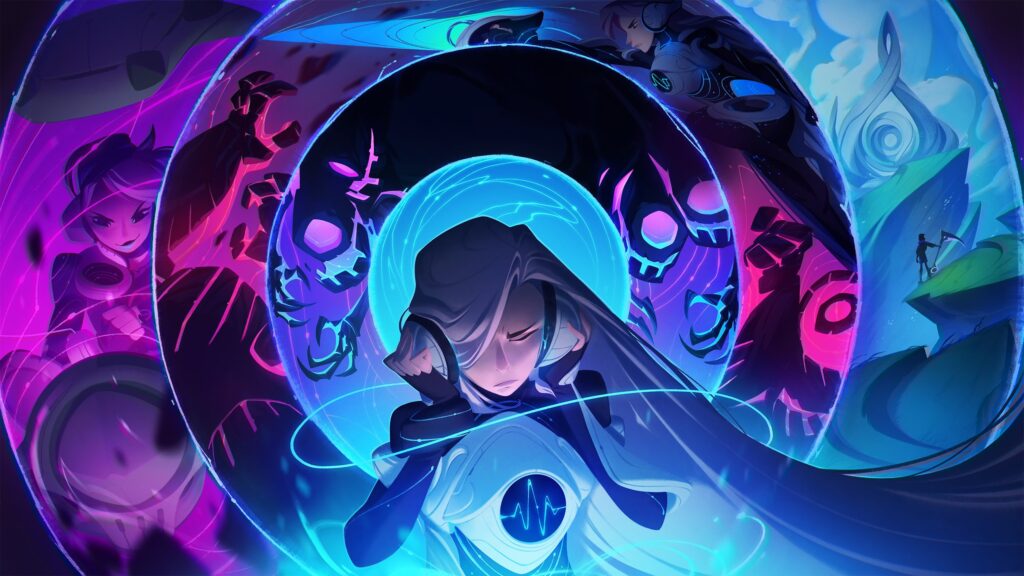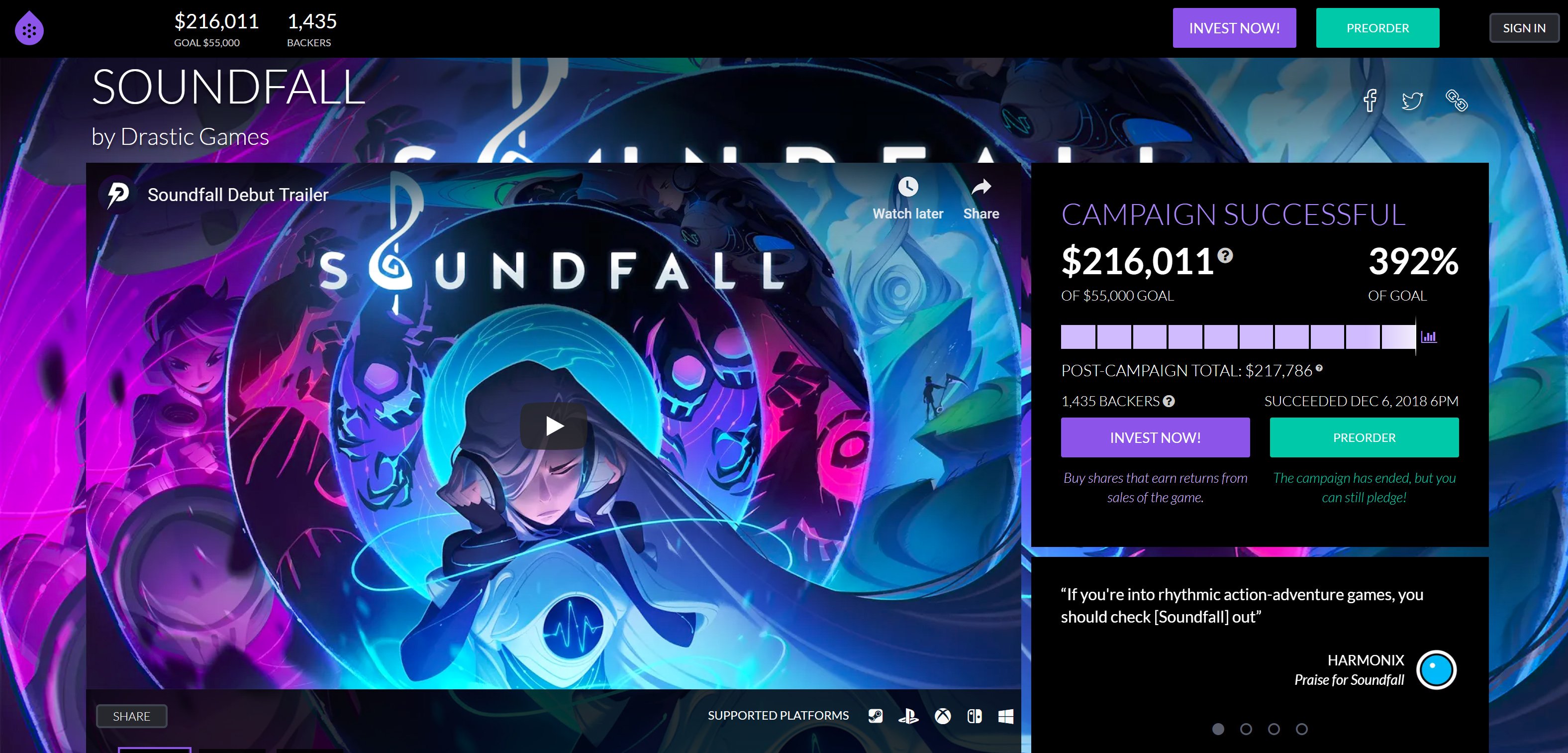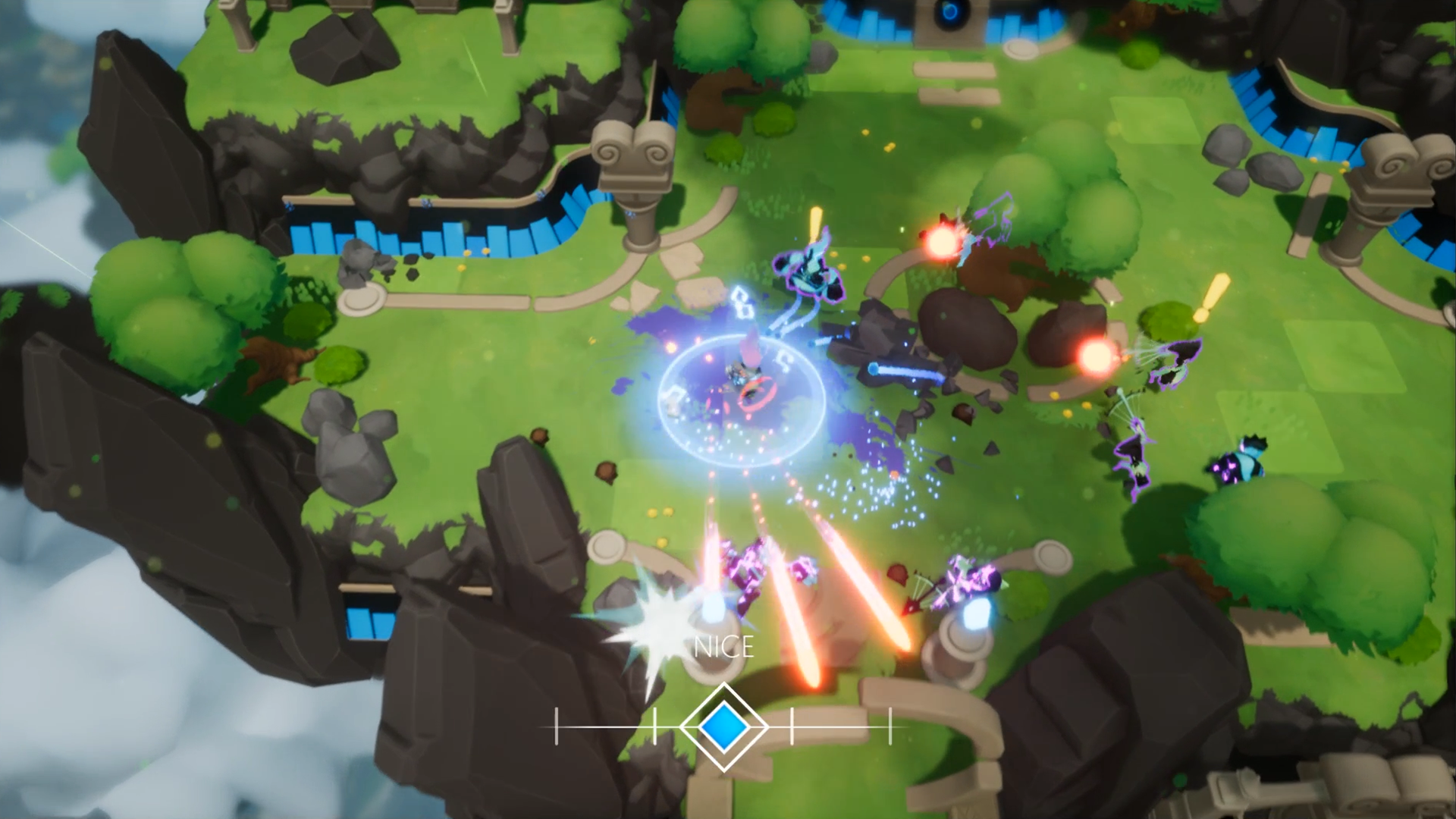
Crowdfunding is a tricky business when it involves video games. We’ve heard countless horror stories, both from developers and consumers, about their experiences with Kickstarter and Indiegogo. But what we don’t have a lot of is perspective about Brian Fargo’s crowdfunding initiative, Fig. GameInformer published an explainer about Fig a few years ago, but there have been a lot of projects to go through the platform without a lot of insight into what the process looks like.
GameDaily had the opportunity to sit down with the two founding members of Drastic Games, Nick Cooper and Julian Trutmann, both of whom are Epic Games alumni. Drastic Games is the company developing a little game called Soundfall, which I sampled at last year’s PAX West. And while we talked a bit about Soundfall‘s development, Cooper and Trutmann were both candid about the process of how their Fig campaign worked and what sets Fig apart from other crowdfunding platforms.

Cooper and Trutmann had no real intention to build Soundfall into what it’s become today. They figured that it was going to be a six-month, low poly project that would kick off a different game. “After a couple months development, as soon as we really started to sink our teeth into [the game],” Trutmann admitted, “… We realized that we’d be leaving a lot on the table if we just smashed something out in six months, so the timeline transformed and we grit our teeth and dug in for the long haul at that point.”
Once they’d determined that Soundfall was going to be much more than a prototyping project, they had a choice to make: dig in with their own money (which they did to some extent) or start to raise funds on their own. It was an easy decision, even if the platform wasn’t, at least not at first.
“I know I, at least, became really enamored with the idea of crowd investing,” Trutmann said. “Giving the opportunity to the larger community to participate in the financing of this sort of project, and not to say ‘Okay, we can make this offer to investors and or publishers,’ which is the traditional route, but really say, ‘Hey, you guys can back this and get something out of it as a financial opportunity.'”
As GameDaily contributor, Mike Futter, wrote in his analysis of the Fig platform back in 2015: “The important things to note are that [consumers] won’t start recovering [their] principle (the amount [they] invested) until the game ships. Between when the game ships and when it breaks even, [they’ll] be suffering a loss that’s greater than $0, but less than [their] initial investment. During that period, [they’ll] still be at a relative loss compared to other investment methods.”
Fig isn’t necessarily a bad choice for potential investors, even though the return on investment will be foggy from the outset, especially if an investment is fairly small. That’s not how Trutmann and Cooper are thinking about their investors, mind you. To them, Fig has provided an invaluable way to connect with their burgeoning community and see what people really think of their game’s concept.
“The other major business side of it is that crowd funding provides a really good litmus test of whether or not you’re hitting the mark with your ideas,” Trutmann noted. “So I think there was always that component of ‘Well let’s get this out there and see how people react to it.’ Because as a developer, often you get too close to the idea and it can be hard to determine how sound an idea or a project is. It kind of goes along with [the concept of] failing fast.”
“I think in addition to that, it’s good to have your community invested emotionally in the project too,” Cooper added. “Because now we don’t just have the community, we have a community that’s already thrown down to help us and they are part of the team now, and it’s good to have that level of support. It’s a really good community building thing to have.”
Crowdfunding gives developers a chance to keep the equity pie whole. Or, in Fig’s case, most of the equity pie. One Fig share is the equivalent of one $1000 investment — it’s a sizable chunk of change for a private investor. By contrast, venture capital will shell out hundreds of thousands (millions, even) for massive chunks of equity. With crowd investment on Fig, Drastic Games gets to keep the vast majority of its company’s shares and still have an engaged community that has invested both money and time into the project’s success.
“We really liked the idea of being able to interface with our community and show them the development process, because it’s something that we’re really excited about,” Trutmann said. “We like talking shop, we don’t just like playing video games, we like making video games and we like talking about making video games. And so we really felt like the community’s probably interested in this as well, and we felt that crowdfunding was a really good way to get those, as Nick says, build that community, to get those fans energized and be able to interface in a way that we were not able to do with being part of a big triple-A studio.”
Apart from that, raising money through Fig didn’t require Drastic Games to bring in a significant community with them, unlike what other platforms almost seem to demand.
“Fig [has] a much more curated experience,” Trutmann explained. “There are fewer projects there, so we didn’t feel like we were competing with as much noise. And they really went out of their way to help us out, from internally discussing what kinds of marketing approaches would be best for us, to throwing out some ad spend to test the waters, see what the ROI on those was gonna be, to helping us set goals, helping us meet those goals, and really trying a whole bunch of alternative ways. I know they put out the demo on a number of different streaming sites, and I think they really generated a lot of traffic for us that was not part of our core community.
“With Kickstarter or something like that, you’re really bringing your own community to the table, and if you don’t have a big enough community, that project’s going nowhere. And in our case, we’ve had this very high speed first couple of months, but we really don’t have a massive social swell at this point. We’ve got only a couple thousand followers on Twitter, et cetera, compared to other projects you know, who are about release, which are, you’re talking about 24K plus. Since we haven’t been on the scene long enough to really build that community, Fig’s extra ground swell that they provided, their extra energy on the projects I think really made a really big difference for us.”
Since Drastic Games was directly introduced to the Fig team (and bypassed the traditional vetting process), there isn’t much info on how Fig vets its projects. But Cooper and Trutmann did talk about how they vetted the platform for themselves.
“We basically asked them, ‘Hey, give us the names of five or six other groups that you guys have worked with so we can do our due diligence,” Trutmann noted. “So we just emailed a bunch of extra guys and just said, ‘Hey, listen.’ Justin made the introductions for us, and then we just asked them a whole bunch of questions about their experience working with Fig, what kind of terms they might have had, some of them were comfortable asking those questions, others not. And that really helped us understand what the boundaries were for the sorts of things that had been done in the past in terms of their negotiations, and that obviously really informed us as we went into that process.”
Working with Fig was much more than a “set it and forget it” relationship — nothing about Fig’s involvement in Soundfall’s campaign was “cookie cutter,” as Trutmann put it. The team was very results oriented and put together a strategy that was mutually beneficial. Whatever was good for Drastic Games and the campaign was good for Fig’s bottom line, after all.
“Since they’re very narrowly focused on video games, the data that they have,” Trutmann began, “they can say ‘Okay, This is the kind of ROI we want to see on ad spend, this is what we expect from a new IP unproven studio, here are some best practices, here’s our hit list, we’re gonna try … You’ve got the demo, that’s a really powerful tool for you, we’re gonna try sharing that on these different Twitch platforms.’ They’d get a lot of tracking links for us.
“In a lot of ways, it was like having our own little personal marketing team, which I don’t think we would have gotten that level of personal attention or that level of data from working with a platform like Indiegogo or Kickstarter, which is spread a little broader. And that was absolutely massive. They really went out of their way to make the project a success and work with us to hit our goals.”
With a team that was so in-the-trenches about Soundfall‘s campaign, it’s hard not to see the benefits of working with Fig when you’re a developer that wants to go their own way in terms of raising capital. Fig’s attention was adaptive, ready to jump on a piece of data that would light the way to the next engagement spike.
“We had one guy stream the game in Japan whose stream got more views in a single day than our trailer did on YouTube at launch.,” Cooper mentioned. “And they were not insubstantial amounts, our trailer on YouTube had 50,000 views, and this guy got 60,000 views, and by the end of it it was like 80,000. So it bumped up our trailer also, at times. Having those break-out moments, we wouldn’t have had them if Fig hadn’t been pushing the demo out there on a bunch of different sources and trying things out.”
“And [there] other things, like they got us to do a number of different 30-second or less ad cuts for Facebook and stuff like that, and we would never have done Facebook ads if they hadn’t explicitly made us do them,” Trutmann admitted, continuing to brush on Fig’s tendency to go above and beyond for their projects. “And they said, ‘Okay, we need you guys to cut together the gameplay footage roughly like this, this is what we need.’ They tried some other image stuff, and what turned out is that the four player co-op GIFs that we had and put in were really hitting the mark. They were generating specifically investment stuff as well. We could see if it was coming in as investment or coming in as reward, and so they had then encouraged us to go out and produce a number of additional four-player stuff.
“And again, we would not have had that data or been able to make that actionable. So they were really good about trying to provide us as much data as possible when we asked for it, and then also, as Nick says, they were very adaptive. It was not a cookie cutter approach, it was ‘Hey, this is your project, moment-to-moment, let’s figure out what are the tools at our disposal to make this a success.'”
Marketing and design are interrelated pieces of the same puzzle. Great game design is marketing, too. In that same vein, designers and developers always need to be aware of what the end user is looking for in an experience. “Anytime you’re doing that [it’s] marketing,” Trutmann said. It requires asking questions that may not seem relevant to the artist that’s creating the game’s landscape, but is essential to understanding what will move the user.

“Thinking about what your end user wants and trying to present that narrative to the user, you’re really improving your design,” Trutmann continued. “And I think we’ve taken that to heart pretty early on in the process, but I thought this was a really eloquent way of articulating that. And crowdfunding does that. You have to put something out there, you have to tell a story, you have to get somebody excited about it, and in the process of trying to figure out is someone excited about this? What makes it exciting? What’s our community really rallying behind? That really comes back and informs us what we need to work on in terms of our own process internally.
“What are the features we need to prioritize? That sort of thing. What are the workflow processes that we as a company need to improve at?”
As we see more and more competitors entering the field from traditional storefronts to crowdfunding, Fig differentiates itself by working with a highly curated group of developers. Instead of throwing them out into the world, with well wishes at their back, Fig confidently leads with adaptive marketing strategies and a level of transparency that many game makers are not afforded in more noisy crowdfunding platform holders.
 GameDaily.biz © 2026 | All Rights Reserved.
GameDaily.biz © 2026 | All Rights Reserved.